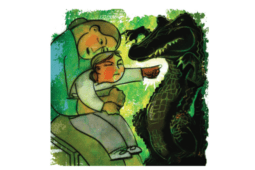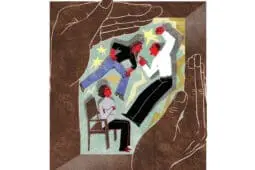Contributed by Martha Straus
Cultivating Relationships in Real Life
Seven Strategies for Guiding Lonely Young AdultsBy asking the right questions in therapy, we can help make the road to adulthood less lonely for high school and college-age kids. Read more
Practice Tools - May/June 2022
"Own Your Hooks and How They Affect You" and "Understand Your Role in the Cycle of Escalation"Handouts and worksheets are helpful ways of reinforcing therapeutic interventions, helping clients develop new skills, and kickstarting change. That’s why in... Read more
You've Got to Be Kidding
The Power of Humor in TherapyShared laughter is an attachment language. Though therapists usually engage more knowingly with tears, the exchange of brighter affect is another kind of... Read more
You Can Do Anything
The Outsized Dreams of AdolescentsWhat if we stopped looking to modify the unique functioning of the teenage brain—delusional though it may be at times—and did more to foster the creative... Read more
Playing Together Apart
Figuring Out Teletherapy for KidsWithout a well-researched paradigm for reaching young children who might need teleplay therapy in an uncertain time like this, therapists are forging ahead... Read more
VIDEO: The Power of Predictability
The Cornerstone of a Strong Therapeutic AllianceProviding familiarity and predictability is one of our greatest tools in therapy, and can provide much-needed comfort to clients who aren't used to it... Read more
My Nightmare Client, My Greatest Gift
Sometimes Our "Worst" Clients Are Our Best TeachersMy young client, Brian, can reduce even confident mid-life adults to an infantile puddle, one provocative comment at a time. He's a therapist's nightmare... Read more
Craving Device-Free Attention
Technoconflicts in Families TodayTherapists are used to adolescent girls grumbling about their hovering, overinvolved parents. But these days, many have a new complaint—technoference in the... Read more
Listening to the Next Generation
Are We Hearing What They Have to Say?Admitting her bafflement with some of her millennial clients, a veteran therapist accepts her ignorance and gets advice from some of the young people in her... Read more
Being There
Inhabiting the Moment with Traumatized TeensWith traumatized adolescent clients, it’s emotion that gradually changes emotion—not rational explanation or interpretation, not snazzy techniques or... Read more
Are You a "Permaparent"?
Your Adult Child Just Moved Back Home. But Is It Normal?Today, about 25 million young adults between between 18 and 34 are currently residing with their parents. In its basic form, this story holds that most... Read more
Getting Unhooked
Connecting with Traumatized Kids Who Push Your ButtonsMost parents “loan” children their adult regulatory system beginning at birth. But developmentally traumatized teens have missed out on this opportunity... Read more
Rush to Judgment
Beware of the ADHD diagnosisPart of the epidemic of misdiagnosed ADHD in young children today results from a failure to understand how trauma often leads to difficulty learning in school. Read more
From Conflict to Alliance
A road map for family interventionsThere's no substitute for a clear clinical model that can guide you through the therapeutic change process. Read more
Bungee Families
You Can Go Home AgainWhile some warn that the conveyor belt that once transported adolescents into adulthood has broken down, other insist the increasing number of adult children... Read more
The Worry Hill
A Child-friendly Approach to OCDTherapists helping children confront OCD face a formidable obstacle: helping their young clients get beyond their immediate terror in the hope of reaping... Read more
Hungry for Connection
10 Ways to Improve Your Therapy with Adolescent GirlsA veteran therapist draws from her years of clinical practice and personal experiences to meet every teenage client where they are. Read more
Nunna Yer Beeswax
No-talk Therapy with AdolescentsWhat to do when the standard techniques of joining provoke furious silence Read more
Martha Straus
Martha Straus, PhD, a professor in the Department of Clinical Psychology at Antioch University New England, is the author of No-Talk Therapy for Children and Adolescents, Adolescent Girls in Crisis, and Treating Traumatized Adolescents: Development, Attachment, and the Therapeutic Relationship.
















